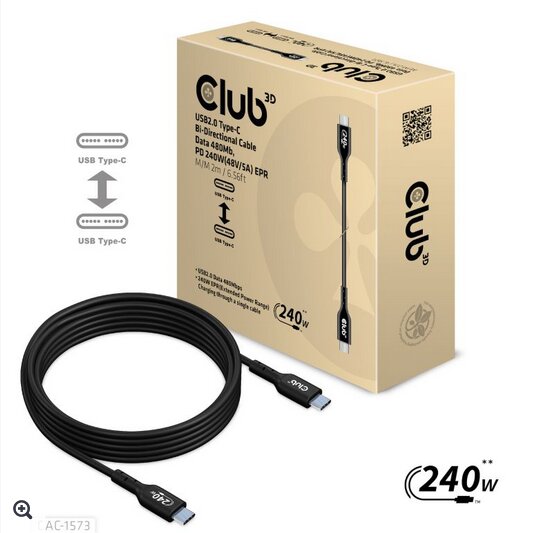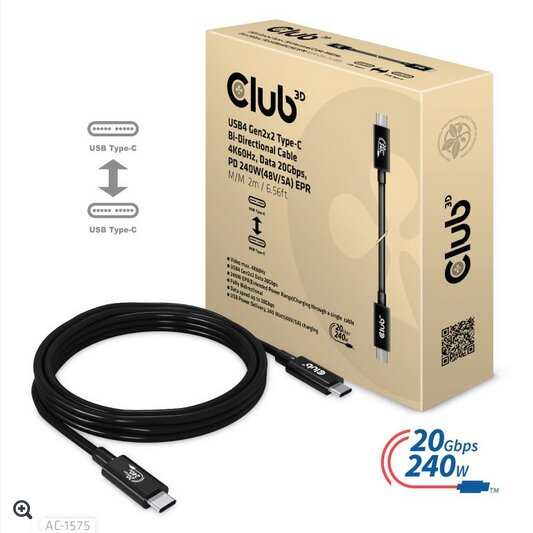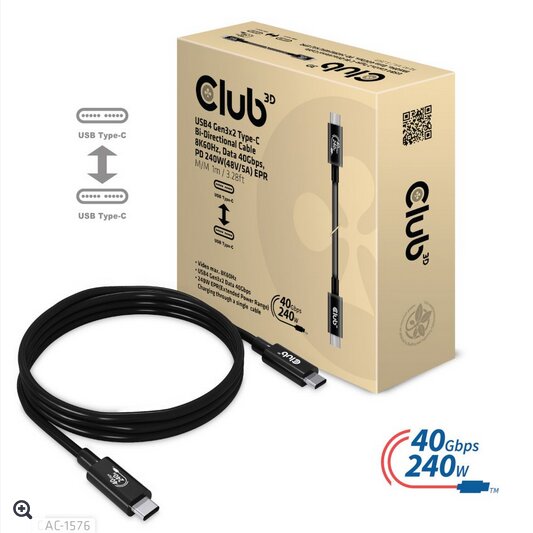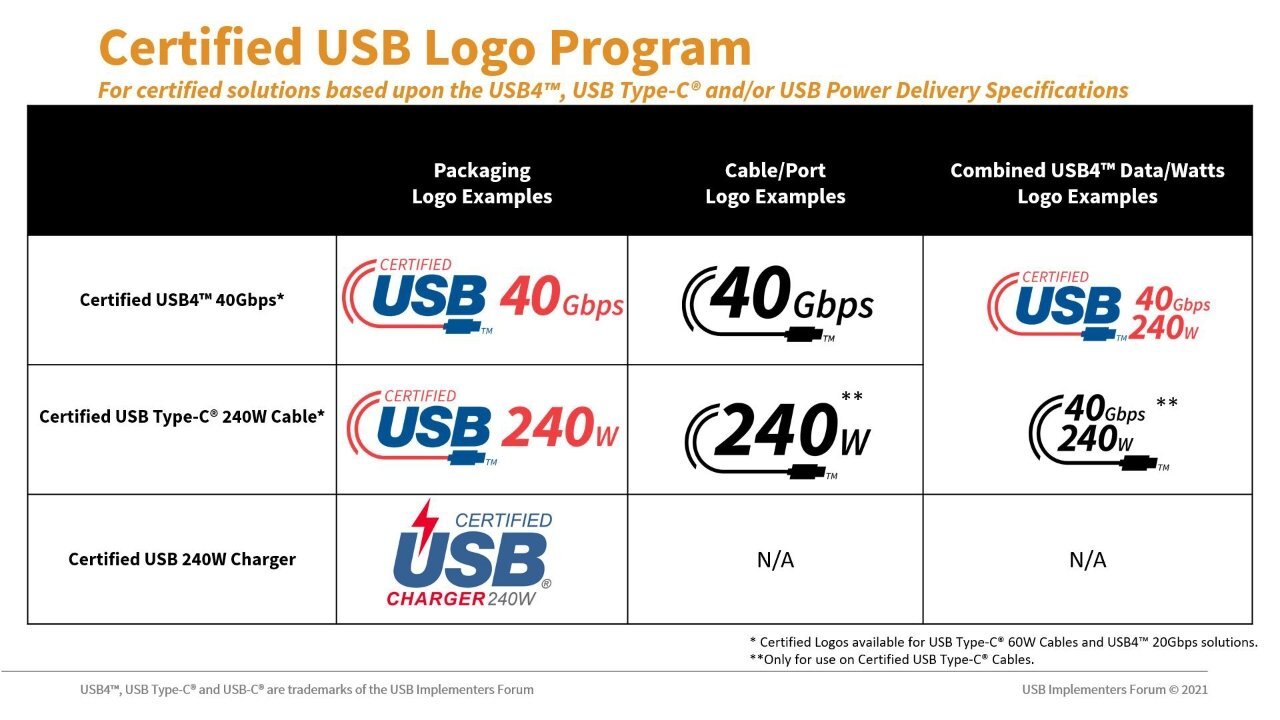

At 5 amps at 20 volts, USB Type-C plugs and cables were originally specified for a maximum of 100 watts, provided the proper cables and plugs or chargers were used. With USB Type C Version 2.1, up to 240 watts over 5 amps at 48 volts were specified in 2021. Club3D now offers corresponding cables.
USB C 2.1 with ERP: 240 instead of 100 watts over USB Type-C
In the past, being limited to a maximum of 100 watts meant that high-performance work and gaming laptops were still shipped with a classic hollow plug power supply, because USB Type-C could not provide enough electrical power even in the specification limit. . The new Extended Power Range (EPR) standard as part of USB Type C 2.1 now makes up to 240 watts possible, but again requires new cables; those specified above for up to 100 watts (SPR) are not sufficient.
In concrete terms, the cables must be specified to operate with 50 volts and 5 amps of current and must carry the additional bits necessary for EPR; therefore, these are active and not passive cables. USB-C cables up to 240 watts should, in turn, be compatible with SPR and EPR and replace pure SPR cables, which will consequently be discontinued.
First three 240-watt cables with USB 2.0 and USB 4
Club3D now offers three first USB Type-C cables that are EPR-compliant, but correspond to very different USB standards when it comes to data transmission: even a “pure charging cable” that only uses USB 2.0 with 480 Mbit/s no toggle Supported DisplayPort mode included. Delivery to retailers is scheduled for early May.
New logos against chaos
The amount of electrical power that a USB Type-C connection can transmit is not yet visible without the help of documentation. Until now, 15 watts to supply connected end devices has been a maximum without the explicit use of USB Power Delivery. Whether more is possible and the host can be charged through it, and with what power, it is usually not indicated on the port. Many USB Type-C-charged laptops often offer up to 60, 70, or 80 watts; only a few automatically support up to 100 watts with a correspondingly powerful power supply.
Going forward, new logos should provide a remedy, again. They should make it clear at a glance whether 60 or 240 watts are provided according to USB Power Delivery 3.1. If it is a certified USB 4 connection, the 40 Gbit/s data rate can also be included in the logo, after all, USB 4 can only be offered at 20 Gbit/s. There is also another logo for chargers that shows the power supply. For 240 and 60 watts alone, a total of seven different logos result, depending on whether they are printed on the packaging or on the connection and with or without data rate. All three Club3D products use the logos. However, the pictograms will still not be able to display the same information on the laptop itself.
To date, the editors are not aware of any laptop that ships with a USB Type-C power supply with more than 100 watts. On the other hand, current high-end gaming laptops already ship with 300-watt power supplies, so the new standard isn’t strong enough either.



